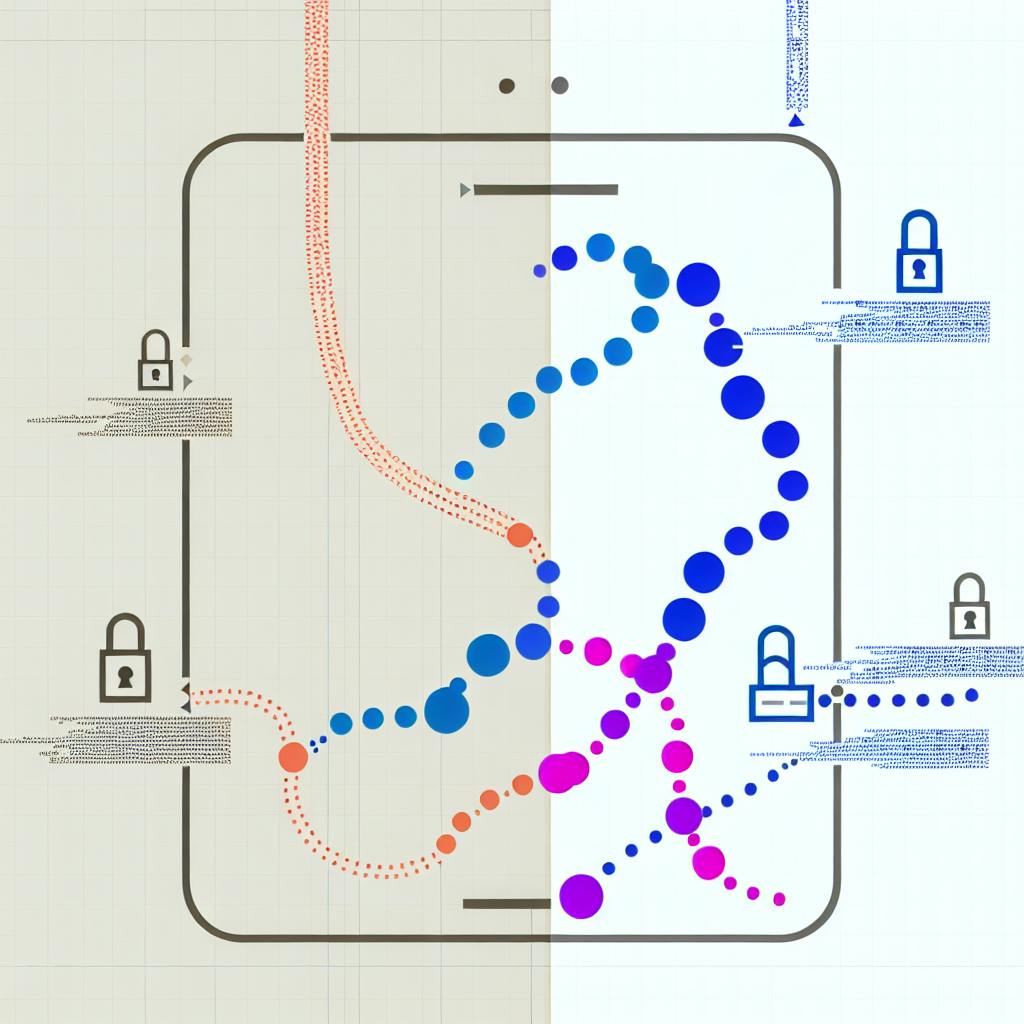PhoneGap and Cordova are two popular frameworks for building hybrid mobile applications using HTML, CSS, and JavaScript. While they share many similarities, there are some key differences:
- Open-Source vs Proprietary: Cordova is a fully open-source project, while PhoneGap is a distribution of Cordova branded and supported by Adobe, adding a layer of proprietary control.
- Features and Tools: PhoneGap offers a cloud-based build service, but Cordova provides a more comprehensive plugin ecosystem and extensive access to native device features.
- Development Workflow: PhoneGap has a streamlined setup and user-friendly interface, while Cordova requires a more manual approach with a command-line interface (CLI), offering more customization options.
Here's a quick comparison table:
FeaturePhoneGapCordovaOpen-sourceNoYesEase of useEasierMore complexNative device accessLimitedExtensivePerformanceCan be inefficientCan be optimizedCompatibilityLimitedWider rangeIntegrationTightly integrated with Adobe ecosystemMore flexible, community-drivenDevelopment workflowSimplified, cloud-based build serviceMore control, manual setup required
Choose PhoneGap if you need a user-friendly experience and are already invested in the Adobe ecosystem. Opt for Cordova if you require more control, customization, and an open-source, community-driven approach.
Origins of PhoneGap and Cordova

PhoneGap and Cordova have a rich history that began in 2008. Here's a brief overview:
PhoneGap's Early Days
PhoneGap was created by Nitobi, a company founded by Andre Charland and Dave Johnson, at the iPhoneDevCamp in San Francisco. Initially, PhoneGap was an open-source project that allowed developers to build mobile applications using web technologies like HTML, CSS, and JavaScript.
The Acquisition and Donation
In 2011, Adobe Systems acquired Nitobi, and PhoneGap became an Adobe product. However, Adobe decided to donate the PhoneGap codebase to the Apache Software Foundation (ASF), a non-profit organization that supports open-source software development.
The Birth of Apache Cordova

The ASF renamed the project to Apache Cordova, and it has since become a popular open-source framework for building hybrid mobile applications. The name "Cordova" was chosen because it was the street name of Nitobi's office in Vancouver, Canada.
Today's Scenario
Today, PhoneGap is a distribution of Apache Cordova, and both frameworks are widely used for building hybrid mobile applications. While PhoneGap is often associated with Adobe, Cordova is the open-source project that powers PhoneGap, providing a flexible and customizable platform for developers to build mobile apps.
Here's a summary of the key events in the history of PhoneGap and Cordova:
YearEvent2008PhoneGap was created by Nitobi at iPhoneDevCamp2011Adobe Systems acquired Nitobi and PhoneGap2011Adobe donated PhoneGap codebase to Apache Software Foundation (ASF)2011ASF renamed the project to Apache Cordova
By understanding the origins of PhoneGap and Cordova, developers can appreciate the evolution of these frameworks and their role in shaping the hybrid mobile app development landscape.
Key Differences Explained
Open-Source vs Proprietary
PhoneGap and Cordova have different approaches to open-source development. Cordova is a fully open-source project, which means that developers can modify and distribute the code freely. This open-source nature of Cordova provides a sense of community and flexibility.
PhoneGap, on the other hand, is a distribution of Cordova, but it is branded and supported by Adobe. While PhoneGap is still open-source, its association with Adobe adds a layer of proprietary control. This means that Adobe has a say in the direction of PhoneGap and can influence its development.
Features and Tools
PhoneGap and Cordova offer different features and tools for developers. Here's a comparison:
FeaturePhoneGapCordovaCloud-based build serviceYes (PhoneGap Build)NoPlugin ecosystemLimitedComprehensiveAccess to native device featuresLimitedExtensive
PhoneGap's cloud-based build service simplifies the process of building and packaging apps for multiple platforms. Cordova, on the other hand, provides a more extensive set of plugins and APIs that allow developers to access native device features.
Development Workflow
The development workflow for PhoneGap and Cordova differs significantly. Here's a comparison:
WorkflowPhoneGapCordovaSetup and configurationStreamlinedManualDevelopment interfaceUser-friendlyCommand-line interface (CLI)Customization optionsLimitedExtensive
PhoneGap's cloud-based build service streamlines the development process, making it easier to set up and deploy apps. Cordova, on the other hand, requires a more manual approach to setting up and configuring projects. While this can be more time-consuming, it also provides developers with more control over the development process.
By understanding the key differences between PhoneGap and Cordova, developers can make informed decisions about which framework to use for their projects.
Pros and Cons
PhoneGap Advantages
PhoneGap offers several benefits that make it a popular choice for developers. Here are some of its key advantages:
AdvantageDescriptionEasy to useAllows developers to create mobile applications quickly and efficientlyIntegration capabilitiesEnables access to native device features and leverages the Adobe ecosystem's supportCloud-based build serviceSimplifies the process of building and packaging apps for multiple platformsCost-effectiveReduces development costs and time by allowing developers to create apps for multiple platforms using a single codebase
PhoneGap Limitations
While PhoneGap has several advantages, it also has some limitations that developers should be aware of:
LimitationDescriptionPerformance bottlenecksMay occur when dealing with complex applications or large datasetsPlugin relianceCan lead to compatibility issues or conflicts between different pluginsNative user experienceMay not be identical to a native app developed specifically for a particular platform
Cordova Strengths
Cordova, on the other hand, offers several strengths that make it an attractive choice for developers. Here are some of its key strengths:
StrengthDescriptionDeveloper autonomyProvides complete control over the development processCustomization optionsEnables developers to tailor their apps to specific requirements or platformsCommunity-driven enhancementsOffers access to a vast ecosystem of plugins and APIs
Cordova Drawbacks
While Cordova has several strengths, it also has some drawbacks that developers should be aware of:
DrawbackDescriptionSteeper learning curveCan be overwhelming for new developers or those without extensive experience with CordovaNative feature supportMay not support all features on all platforms, particularly on older platforms or devices
sbb-itb-8abf120
Side-by-Side Comparison
Comparison Table
Here's a concise comparison table highlighting the key differences between PhoneGap and Cordova:
FeaturePhoneGapCordovaOpen-sourceNoYesEase of useEasierMore complexNative device accessYesYesPerformanceCan be inefficientCan be optimizedCompatibilityLimitedWider rangeIntegrationTightly integrated with Adobe ecosystemMore flexible, community-drivenDevelopment workflowSimplified, cloud-based build serviceMore control, manual setup required
This table provides a quick overview of the main differences between PhoneGap and Cordova, helping you make an informed decision about which framework to choose for your mobile app development project.
Conclusion and Recommendations
In conclusion, PhoneGap and Cordova are two popular frameworks for building hybrid mobile applications. Each has its strengths and weaknesses, making one more suitable for your project than the other.
Choosing Between PhoneGap and Cordova
When deciding between PhoneGap and Cordova, consider the following:
ScenarioPhoneGapCordovaAlready invested in Adobe ecosystemNeed more control over development workflowNew to hybrid mobile app developmentLooking for open-source, community-driven approach
Final Thoughts
Ultimately, the choice between PhoneGap and Cordova depends on your project's specific needs, your team's expertise, and your desired level of control and flexibility. By understanding the key differences between these two frameworks, you can make an informed decision and choose the right tool for your mobile app development project.
FAQs
What is the difference between Cordova and PhoneGap?
Cordova and PhoneGap are often used interchangeably, but they have a subtle difference. Cordova is an open-source platform that allows developers to build mobile applications using HTML, CSS, and JavaScript. PhoneGap, on the other hand, is a distribution of Cordova, which is branded and supported by Adobe.
Here's a summary:
FrameworkDescriptionCordovaOpen-source platform for building hybrid mobile appsPhoneGapDistribution of Cordova, branded and supported by Adobe
In essence, both frameworks enable developers to create mobile applications using standard web technologies, but they have different approaches to open-source development and proprietary control.








